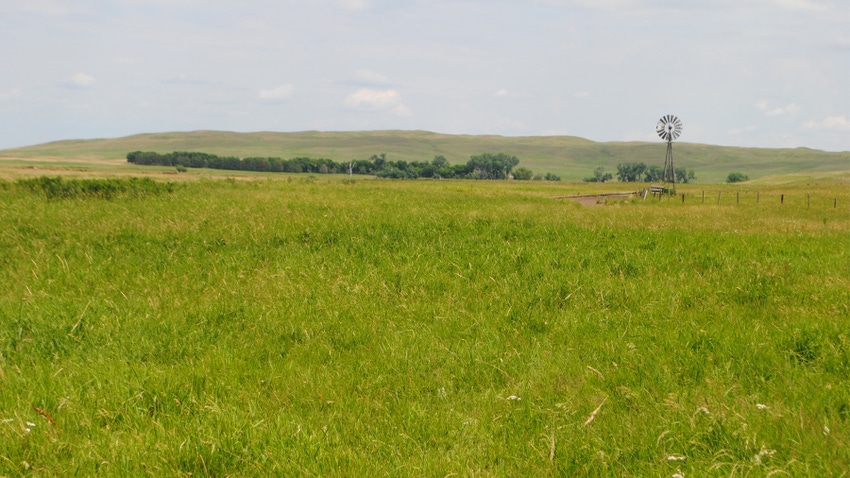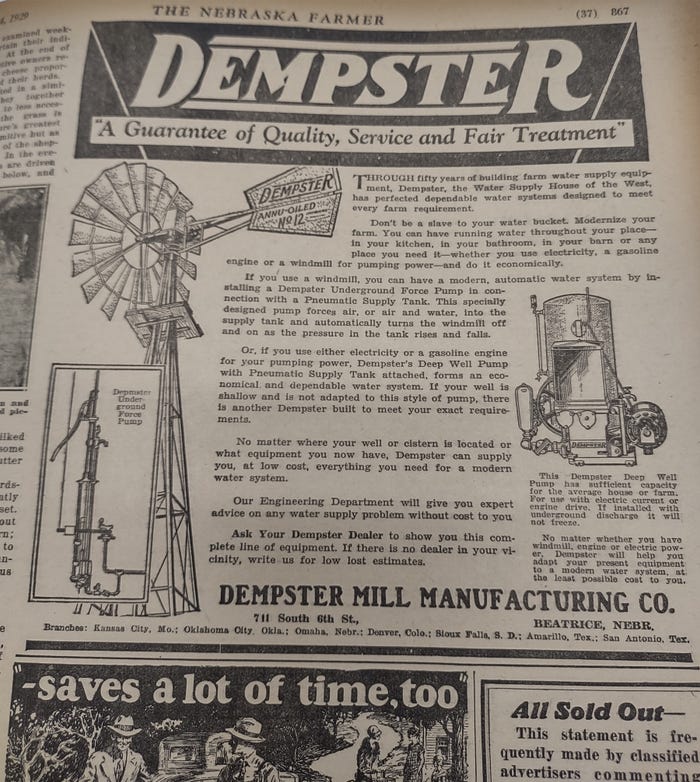
Dempster is not the only Nebraska-based windmill manufacturer, but it is one of the most widely known.
Not that long ago, you could see windmills dotting pastures in almost every corner of the state, filling livestock water tanks and often pumping water for farmsteads. In many sections of the state, that is still the case.
Dempster was founded by Charles Brackett Dempster, who purchased a small windmill and pump shop in Beatrice, Neb., in 1878, and started up in the windmill business. At first, the windmills he was selling were purchased from a manufacturer, but over time, Dempster realized that he could produce them himself.
Solid wheel
With the original wooden Dempster Solid Wheel windmill, produced beginning in 1885, Dempster built what turned into a windmill empire. His early steel windmill, the Queen City, was first manufactured in 1892 and was available with an 8-foot wheel. By 1929, Dempster was selling its self-oiling models.
That year, Dempster placed an ad in the May 4 issue of Nebraska Farmer, marketing its windmills along with the Dempster Deep Well Pump with “sufficient capacity for the average house or farm.” It could be used with electricity or engine drive, and if it were installed with underground discharge, it would not freeze, the ad says.

LOOKING BACK: This ad for a deep well pump, manufactured by Dempster, ran on Page 37 in the May 4, 1929, issue of Nebraska Farmer. (Photo by Farm Progress)
This was a move to a more modern water system for the farmstead, Dempster said.
“If you use a windmill, you can have a modern, automatic water system by installing a Dempster Underground Force Pump in connection with a Pneumatic Supply Tank,” the ad said. “This specially designed pump forces air, or air and water, into the supply tank and automatically turns the windmill off and on as the pressure in the tank rises and falls.”
Known for innovating
This was quite an innovation back in 1929. But innovation was nothing new for the Dempster Co. Through the 1920s, the company was producing vaneless sectional wheels, metal wheels and some solid wheels as well.
But self-oiling windmills were gaining steam in the marketplace because they reduced maintenance issues. Dempster’s self-oiling windmills had a gearbox that was enclosed away from the weather with an oil bath that kept the gears lubricated as they moved.
The first self-oiling windmill was the No. 11, but the most popular and bestselling windmill ever made by the company was the No. 12 Annu-Oiled model, which was made beginning in 1925, all the way through 1984. The last Dempster windmill model was the No. 12B Annu-Oiled, made beginning in 1982 through 2009.
While the old steel windmills have survived the test of time on the Plains, they continue to do good service in pastures across the country, pumping water in areas where there is no electric power nearby. For many, the windmill stands as an iconic symbol of the inventive and self-reliant nature of settlers and their descendants on the Plains.
About the Author(s)
You May Also Like






